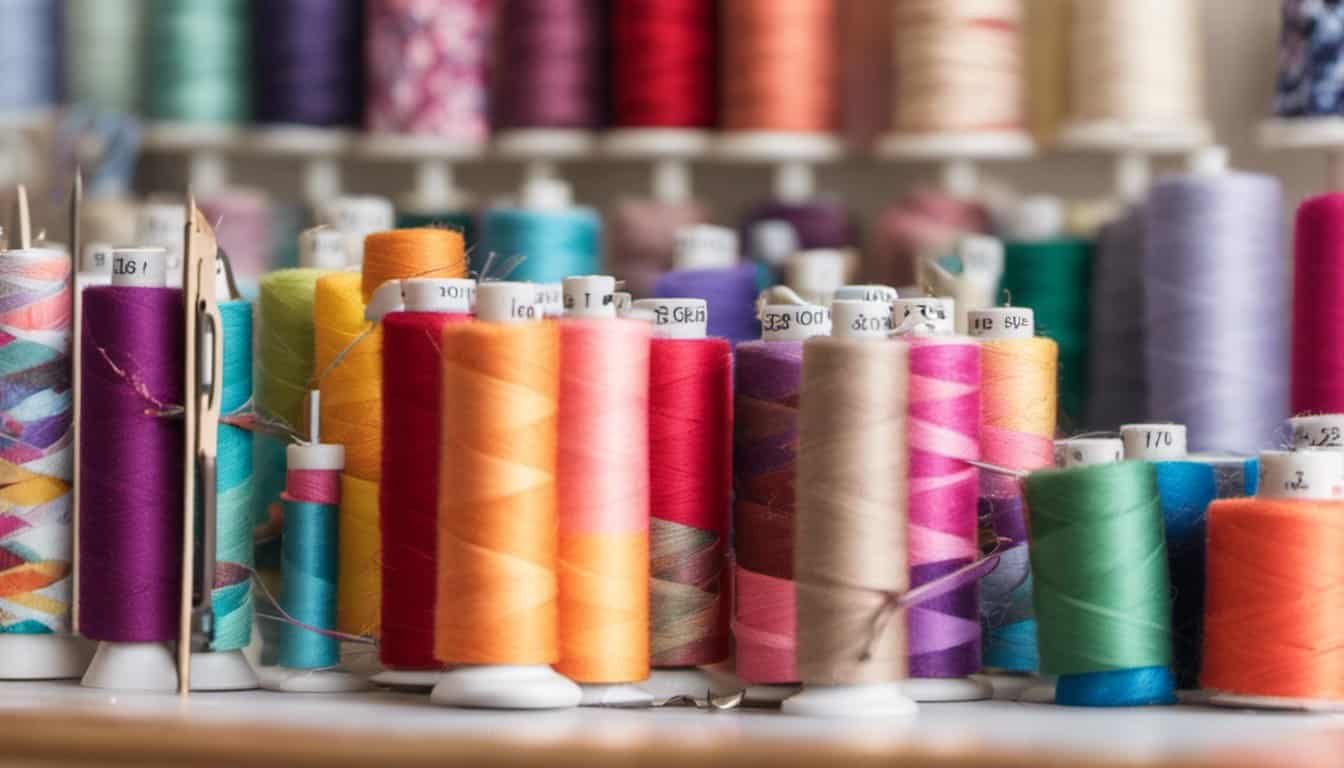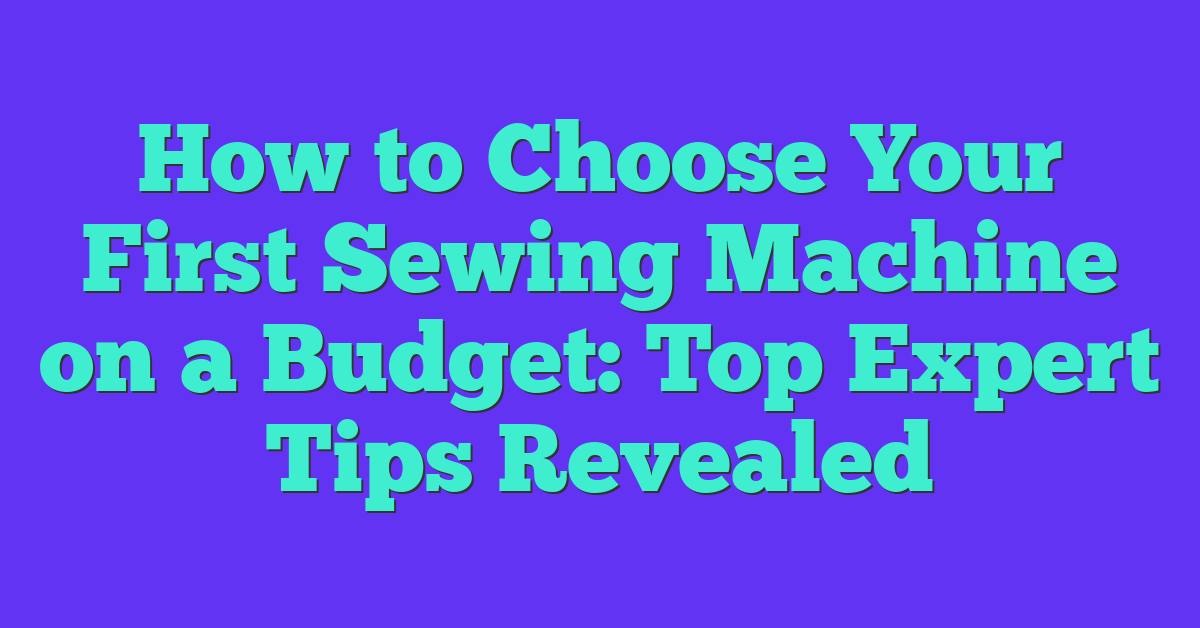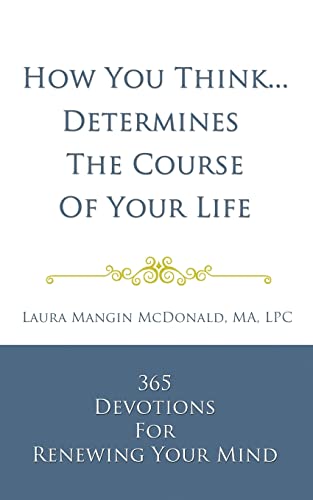I remember the excitement of getting my first sewing machine. But with so many options out there, especially when you’re on a tight budget, choosing the right one can feel overwhelming. That’s why I decided to explore how to find a quality machine without breaking the bank.
Whether you’re a complete beginner or looking to revive your sewing skills, selecting a machine that fits both your needs and your wallet is crucial. In this guide, I’ll share practical tips and insights to help you make an informed decision and start your sewing journey with confidence.
Determine Your Sewing Needs
Identifying your sewing needs ensures you select a machine that matches your skills and project goals while staying within budget.
Assess Your Skill Level
Evaluate your proficiency to choose suitable machine features. Beginners prioritize simplicity, intermediate sewists seek additional functionalities, and advanced users require comprehensive capabilities.
Identify Your Projects
- Garments: Require reliable stitching and adjustable settings.
- Home Décor: Need specialty stitches and versatile attachments.
- Accessories: Demand precision and compact features.
- Quilting: Call for a sturdy frame and extensive stitch options.
Set a Realistic Budget
Setting a realistic budget ensures you choose a sewing machine that fits your financial plan without compromising quality.
Understand Price Ranges
Sewing machines vary widely in price based on features and brand reputation. Typically, entry-level models range from $100 to $300, offering basic stitching and essential functions suitable for beginners. Mid-range machines cost between $300 and $600, providing additional features like multiple stitch options and automatic threading. High-end models exceed $600, equipped with advanced functionalities such as computerized embroidery and extensive customization.
| Price Range | Features | Suitable For |
|---|---|---|
| $100 – $300 | Basic stitches, manual controls, lightweight | Beginners |
| $300 – $600 | Multiple stitch options, automatic functions | Intermediate sewists |
| $600+ | Computerized embroidery, extensive features | Advanced users |
Allocate Funds for Accessories
Allocate part of your budget for essential accessories to enhance your sewing experience. Allocate 20-30% of your total budget for items like extra feet, bobbins, needles, and thread. Investing in a quality stitch box, seam ripper, and measuring tools also proves beneficial. Additionally, consider budgeting for a sturdy sewing machine cover and maintenance kit to extend your machine’s lifespan.
Essential Features to Look For
A sewing machine’s key features can make or break your sewing experience. Focus on these essentials to find a quality machine within your budget.
Stitch Options
Choose a machine with versatile stitch selections to handle various projects. At least 10 built-in stitches ensure flexibility for garments, home décor, and accessories. Include basic stitches—straight, zigzag—and decorative ones like buttonholes and stretch stitches. Some models offer automatic tension and stitch width adjustments, enhancing ease and accuracy in your work.
Ease of Use
Prioritize user-friendly machines for a smooth start. Look for intuitive controls, clear instructional manuals, and accessible needle threading. Features like drop-in bobbins and automatic needle threading save time and reduce frustration. Lightweight designs improve portability, while built-in tutorials or LCD screens guide you through stitching processes, making learning easier for beginners.
Types of Sewing Machines
Understanding the different types of sewing machines helps me choose the right one for my needs. The main categories I consider are mechanical vs. electronic and portable vs. heavy-duty machines.
Mechanical vs. Electronic
Mechanical sewing machines offer manual controls for stitch selection and adjustments. Electronic machines come with computerized interfaces, providing features like automatic needle threading and a variety of programmable stitch patterns. If I prefer simplicity and reliability, mechanical models give me straightforward operation. On the other hand, electronic machines deliver advanced features that enhance the versatility and efficiency of my sewing projects.
Portable vs. Heavy-Duty
Portable sewing machines are lightweight and compact, making them ideal for small spaces and occasional use. Heavy-duty machines are built with robust motors and sturdy frames, capable of handling thick fabrics and extensive sewing tasks. When space is limited or I need mobility, portable models fit my requirements. If I plan to work on diverse and demanding projects regularly, heavy-duty machines offer the durability and power essential for consistent performance.
Top Budget-Friendly Models
Choosing the right sewing machine doesn’t have to break the bank. Here are some top budget-friendly models that offer great value without compromising quality.

Recommended Brands
- Brother: Known for their user-friendly machines, Brother offers a range of models perfect for beginners and intermediate sewists. Features often include multiple stitch options and easy maintenance.
- Singer: A longstanding favorite, Singer machines provide reliability and durability. Many models come with built-in stitches and automatic functions, making them ideal for various projects.
- Janome: Janome combines affordability with high performance. Their machines typically offer sturdy construction and versatile stitching capabilities, suitable for both simple and complex sewing tasks.
- Everest: Offering great value, Everest machines are perfect for hobbyists. They include essential features like adjustable stitch length and width, ensuring flexibility for different fabric types.
- Smith & Noble: These machines are a cost-effective choice for those seeking basic functionalities. They are lightweight and easy to transport, making them suitable for small spaces and occasional use.
Buying New vs. Used
When deciding between new and used sewing machines, consider the following:
- New Machines:
- Advantages: Warranty protection, latest features, and reliable performance. Ideal for first-time buyers seeking peace of mind and support.
- Disadvantages: Higher initial cost compared to used models. Limited availability of older models with specific features.
- Used Machines:
- Advantages: Lower price point, potential to find higher-end models within a budget. Good option for those familiar with machine maintenance.
- Disadvantages: Potential lack of warranty and possible hidden issues. Requires careful inspection to ensure functionality and condition.
Evaluate your budget, skill level, and willingness to perform maintenance when choosing between new and used sewing machines.
Conclusion
Finding your first sewing machine on a budget doesn’t have to be overwhelming. I remember feeling the same way when I started out, but with a bit of research and some careful consideration, it all clicked.
Choosing a machine that fits your needs and budget allows you to dive into sewing with confidence. Whether you’re just starting or ready to take on bigger projects, there’s a perfect machine out there for you.
Don’t forget to factor in the essential accessories to make your sewing journey even smoother. Happy sewing!

















